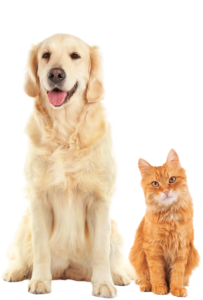Sensitivity to sound is a relatively common affliction of pets. Although anxious pets and certain breeds can be more likely to suffer from sound phobias, any pet may have issues with thunderstorms, fireworks and/or loud music.
The sensitivity may arise from a previous negative association. For example, a pet that has been disciplined for getting into the garbage may develop a fear of the sound of a plastic bag rustling. Unfortunately, without the proper intervention, the fear often worsens over time.
Sound Sensitive Pet Symptoms
Symptoms you may notice in your sound sensitive pet include:
- hiding
- cowering
- trembling
- pacing, circling
- barking, whining
- digging
- jumping
- chewing
- or even urination and defecation
The most common causes of sound related fear behaviour are thunderstorms, fireworks and gunshots. Thunderstorms are especially complex events because your pet may also be affected by the changes in barometric pressure, lightening, heavy rain and static charges.
Treatments & Remedies for Sound Sensitive Pets
- The good news is that you can help your pet deal with these phobias. Massage therapy is a great first choice. A full body calming massage will steady your pet and strengthen the bond between you.
- Another non-medicinal option is a commercially available “Thunder Shirt” which fits tightly and has a metallic lining to reduce sensitivity to static charges.
- Creating “white noise” may be just enough to distract your pet. This can be especially useful during Halloween to drown out the sound of fire crackers which causes tremendous anxiety for some pets. You may try turning the music up or keeping the television on overnight or spending some quality time in the laundry room with the washer or dryer running. Sometimes something as simple as a house fan can do the trick.
- If white noise is not enough to distract your fearful pet, try having a puppy party with some friends’ dogs to keep your dog busy long enough to bypass the fear cycle. Working with a trainer is also recommended as some noise phobias can be difficult to break, not to mention destructive to the home. A last resort may be a visit to your veterinarian for a prescription sedative or anti-anxiety medication which also works well along side professional training.
When a new pet is welcomed into your home, doing everything you can to prevent the development of sound phobias is the best plan. Gently expose them to as many sounds and experiences as possible. Start by teaching your pet that play is much more fun than any scary noise she may experience. Doing fun activities such as hide and seek, fetch or playing with a favourite toy while loud sounds occur well help you achieve this. They now associate what could have been scary noises with fun games and favourite toys. This not only desensitizes your pet from loud noises but helps your pet to become more social and develops a stronger bond between the two of you!
Written by Van Isle Veterinary Hospital




